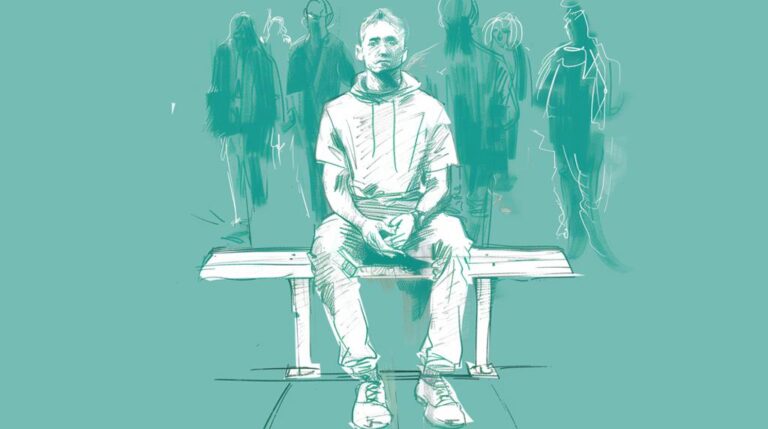The ongoing struggle to protect Brazil’s isolated indigenous tribes has entered a critical new phase, as recent developments underscore escalating tensions between government authorities, environmental groups, and commercial interests. Once largely confined to remote conversations and specialized advocacy circles, the battle over these vulnerable communities and their ancestral lands is now capturing national and international attention. As Brazil grapples with economic pressures and environmental concerns, the fate of isolated tribes-who have chosen minimal contact with the outside world-hangs in the balance, raising urgent questions about sovereignty, human rights, and conservation.
The Escalating Conflict Surrounding Brazil’s Isolated Indigenous Communities
Recent developments have intensified the clashes over the fate of Brazil’s isolated indigenous communities, many of whom reside deep within the Amazon rainforest. These groups, often referred to as “uncontacted tribes,” face mounting threats from illegal logging, mining, and land encroachment. Government agencies and indigenous rights organizations remain at odds over enforcement strategies, with critics accusing authorities of insufficient protection and overlooking the broader socioeconomic impacts on these vulnerable populations. Meanwhile, environmental advocates warn that continued deforestation will not only displace indigenous peoples but also accelerate biodiversity loss and climate instability.
Key pressures faced by isolated tribes include:
- Increased illegal resource extraction fueled by lax regulations
- Encroachment from agricultural expansion
- Conflicting interests between development goals and indigenous sovereignty
- Limited access to healthcare and education for contacted indigenous relatives
| Threat | Impact | Response |
|---|---|---|
| Illegal Mining | Polluted rivers, habitat destruction | Federal crackdowns, patrol increases |
| Logging | Loss of forest cover, displacement | Indigenous land demarcation efforts |
| Agricultural Expansion | Territorial conflicts, cultural erosion | Legal protection proposals under review |
Government Policies and External Pressures Threaten Tribal Autonomy
Recent shifts in government policy have intensified challenges to the sovereignty of Brazil’s isolated indigenous communities. Measures aimed at expanding agricultural frontiers, mining concessions, and infrastructure development are creeping closer to tribal lands, undermining decades of legal protections. These interventions, often justified by economic progress narratives, have sparked outrage among indigenous leaders and human rights advocates alike, who warn that the erosion of territorial boundaries threatens not only cultural preservation but also the physical survival of these groups.
The pressures are compounded by external actors, including illegal loggers and land grabbers, whose incursions have become increasingly frequent amidst weakened enforcement. The stakes are high and complex, as illustrated by the following impacts on indigenous autonomy:
- Environmental degradation: Deforestation and pollution directly affect traditional food sources.
- Legal ambiguity: Conflicting regulations hinder indigenous communities’ ability to defend their rights.
- Social fragmentation: Forced displacement disrupts longstanding social structures and cultural practices.
| Government Action | Impact on Tribes | Current Status |
|---|---|---|
| Relaxation of protected land regulations | Increased land invasions | Under debate in Congress |
| Approval of new mining licenses | Pollution and habitat loss | Multiple lawsuits filed |
| Infrastructure projects near tribal zones | Risk of forced displacement | Construction ongoing |
Urgent Calls for Protective Measures and International Support to Safeguard Isolated Tribes
Recent developments have raised alarm among human rights organizations and indigenous advocates, emphasizing the critical need to enhance protective measures surrounding Brazil’s isolated tribes. These communities, living deep within the Amazon rainforest, face escalating threats from illegal logging, mining, and disease transmission introduced by outside contact. Experts warn that without swift intervention, these tribes risk irreversible cultural and demographic collapse.
International stakeholders are increasingly calling for coordinated efforts to guarantee the tribes’ safety, urging governments and NGOs to prioritize:
- Strict enforcement of no-contact policies and territorial boundaries
- Increased funding for surveillance and rapid-response teams
- Global awareness campaigns highlighting the tribes’ vulnerabilities
- Collaborative research respecting indigenous autonomy and knowledge
| Threat | Impact | Urgency Level |
|---|---|---|
| Illegal Logging | Habitat Destruction | High |
| Mining Operations | Pollution & Land Degradation | Critical |
| Disease Transmission | Population Decline | Severe |
Insights and Conclusions
As the struggle to protect Brazil’s isolated tribes enters a new phase, the stakes have never been higher. With increasing pressures from economic development and political shifts, the future of these vulnerable communities hangs in the balance. Observers and advocates alike will be closely watching how policymakers, indigenous leaders, and external actors navigate this evolving landscape-decisions made now will reverberate for generations to come. The world’s attention remains fixed on Brazil, where the battle over isolation and integration continues to unfold.




